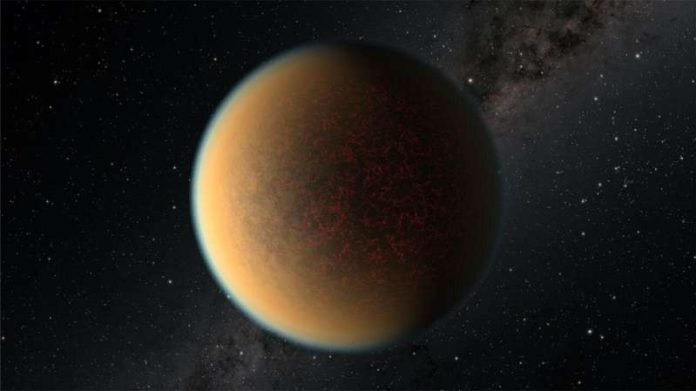
One of the main goals in astronomy is to find planets beyond Earth that might support life. For a planet to be considered habitable, scientists agree that several key factors are needed, with one of the most important being whether the planet has an atmosphere.
An atmosphere not only protects life from harmful space radiation but also helps regulate the planet’s temperature.
Although scientists have found rocky, Earth-like planets orbiting other stars, known as exoplanets, they haven’t yet been able to confirm if any of these planets have atmospheres.
If we can discover such planets, it would give us valuable insights into how atmospheres form and what makes a planet capable of sustaining life.
A recent study led by Qiao Xue, a Ph.D. student at the University of Chicago, has introduced a new way to detect atmospheres on distant planets.
This method is simpler and more efficient than older techniques. The study, done in collaboration with Professor Jacob Bean, was published in The Astrophysical Journal Letters.
This new technique could help scientists study many more planets in the future. The more planets we can analyze, the more likely we are to find patterns that show how atmospheres are formed.
Xue hopes that as more data becomes available, especially from powerful tools like the James Webb Space Telescope, it will help us predict which planets could be habitable.
Why Atmospheres Matter
Understanding whether a planet has an atmosphere is crucial for determining its potential to support life. For example, Earth’s atmosphere helps to evenly distribute heat from the sun, making it a comfortable place for life to exist.
Without an atmosphere, a planet’s surface could become too hot or too cold for living organisms to survive.
However, it’s extremely difficult to observe rocky, Earth-like planets directly, especially those that are located close to their stars. Instead, scientists have to gather clues, such as the way light behaves when the planet moves in front of or behind its star.
A New Approach
In 2019, scientists proposed a method that could be used to search for atmospheres on exoplanets. This approach, now tested by Xue and her team, looks at the temperature of the planet.
Specifically, they measure the difference between the temperature of the side of the planet facing its star and how hot the planet could theoretically be without an atmosphere.
If a planet has an atmosphere, it would spread heat across its surface, lowering the temperature on its hottest side. Therefore, if the measured temperature of a planet is lower than its theoretical maximum, it suggests the presence of an atmosphere.
The challenge with this method was that until recently, we didn’t have instruments precise enough to measure these temperatures accurately.
That changed with the arrival of the James Webb Space Telescope, which can observe planets in the infrared range. This allows scientists to measure the heat emitted by a planet more precisely than before.
Testing the Method
The new method was tested on an exoplanet called GJ1132 b. Scientists observed how the planet blocked some of its star’s light as it moved across the front of the star. They also measured the light emitted when the planet was almost behind the star.
By comparing these measurements, they were able to calculate the planet’s temperature.
The result? The temperature of GJ1132 b was almost as hot as it could theoretically be, suggesting that the planet does not have an atmosphere to spread heat around its surface. Because of this, scientists concluded that GJ1132 b is not likely to be habitable.
Advantages of the New Method
While this is not the only technique for finding atmospheres, it has some advantages over other methods.
One common approach is to measure light passing through a planet’s atmosphere, but this can be complicated by activity on the star or interference from clouds. Xue’s method is simpler and less likely to give misleading results.
By applying this technique to more planets, scientists hope to build a clearer picture of how atmospheres form and what conditions are needed for planets to maintain them. This knowledge will make it easier to identify planets that have the potential to sustain life.
For Xue, the research was especially exciting because it involved rocky planets, which are considered the most likely places to find life. “I’ve always wanted to study rocky planets because of their potential for habitability,” she said. “Now I’m eager to see what new discoveries we’ll make in the future.”
The research findings can be found in The Astrophysical Journal Letters.
Copyright © 2024 Knowridge Science Report. All rights reserved.



